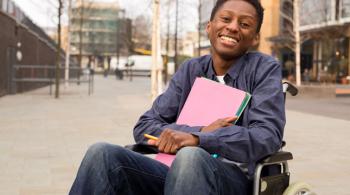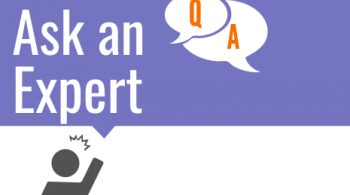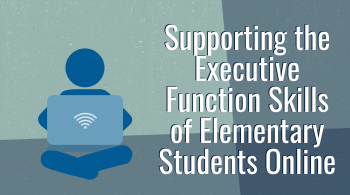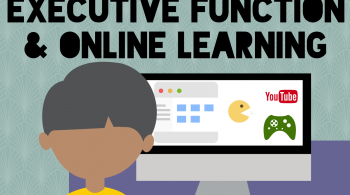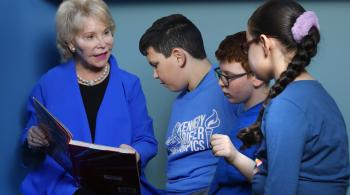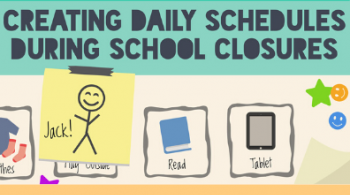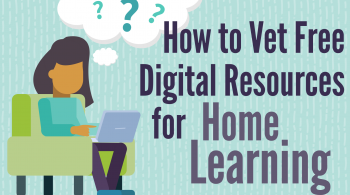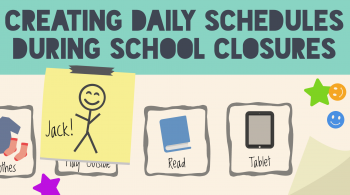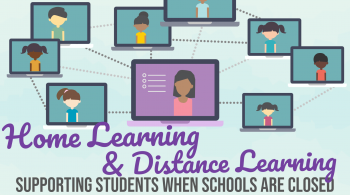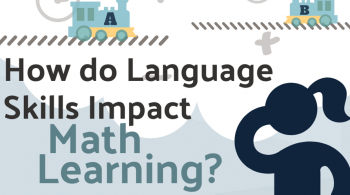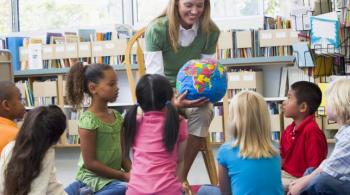By Erin Richmond, M.Ed., Fellow at the Center for Innovation and Leadership in Special Education at Kennedy Krieger Institute
April 11, 2017

The prevalence rate of autism spectrum disorder (ASD) is currently estimated to be one in sixty-eight (Centers for Disease Control and Prevention, 2014). Furthermore, the Individuals with Disabilities Education Act (2004) mandates students with disabilities are to be taught to the greatest extent possible with their typically developing peers. If you would like to know more about autism before you read any further, read What is Autism Spectrum Disorder (ASD)? Like all children, students with autism grow and develop when they are in environments where they feel valued and where they feel they belong. Dawson & Scott (2013) explain that inclusion has been shown to “lead to academic gains, including better performance on standardized assessments, IEP goals, classroom grades, behaviors, and motivation for learning for students with disabilities” (p. 193). Inclusive education involves teachers and schools making a commitment to build and maintain a sense of belonging for all students. Embrace this mindset: Each child has gifts and strengths to bring to a classroom. Children with autism are strong and capable – not weak or with inherent deficit. They all belong and it is my job to help each one of them become successful.
Successful inclusive environments do not happen by coincidence. They are created through careful planning and preparation by educators with an inclusive mindset. Implementing inclusive practices and strategies can be challenging and complex; however, “feeling efficacious in teaching students with disabilities is a key aspect of enabling teachers to promote inclusion” (Dawson & Scott, p. 181). To ensure success for students with autism in general education classrooms, teachers must plan collaboratively, create structured classrooms, and teach lessons in meaningful and engaging ways. This guide provides useful suggestions and resources for helping students with autism thrive emotionally, socially, and academically in your classrooms. This post will focus on social and behavioral supports. Be sure to look for Part II on learning environment supports and instructional strategies!
Be a Supportive Communication Partner
Students with autism communicate in a variety of ways. It will be important to experiment with strategies, systems, materials, or devices that will be effective and preferred by the student. Consider the following tips on how to discover and celebrate your student’s “voice.”
- Let Go of “Look at Me” – Few, if any, students will respond to this phrase. You must respect eye gaze avoidance because eye contact can be uncomfortable and even painful for children with ASD. Some may appreciate tricks for connecting with a communication partner such as looking at a different focal point (i.e., forehead, nose, etc.).
- Consider voice and tone – Playing with volume and tone can be helpful in connecting with a child with autism (i.e., whisper, sing-song voice, funny accents of favorite characters, etc.)
- Modes of Output – Try different modes of output if there seems to be a communication breakdown (i.e., play telephone, text/message on the computer, provide visuals, etc.)
- Understand Augmentative and Alternative Communication Systems – Augmentative and alternative communication often involves a device or mode for constructing and relaying a message (pictures, communication board, computer, etc.). Be mindful and use visual and auditory attention to ensure students with ASD have the opportunity to fully participate in conversations. Visit The Center for AAC and Autism for more information!
- Figurative Language and Metaphors – Many students with ASD interpret language literally and may need help understanding idioms, jokes, slang, and sarcasm. Double check for understanding and provide opportunities for individuals to learn about language (i.e., weekly metaphor or joke, create personal dictionary, use visuals for figurative language, create games, and collaborate with the Speech and Language Pathologist for ideas!).
- Be a role model – Model the kind of language you want the child with ASD to use
For more information, read Communication Tips for Working with Students with Autism Spectrum Disorder, written by Carrie Schiel, M.S., CCC-SLP, former CILSE fellow.
Promote Social Skills and Build Friendships
As humans, we crave approval, love, and acceptance. This is no different for children with ASD. For many children with autism, “participating in a social interaction is like playing a game without knowing the rules or the objectives” (Kluth, 2010, p. 111). Children with autism are too often expected to conform to what is “typical” and “appropriate” for an inclusive setting. Instead, teachers should “expand the notion of what appropriate participation looks like” (Kluth, 2010, p. 113). Forming and maintaining friendships is also difficult for many children with ASD due to poor conversational skills, difficulty recognizing social cues, limited or unusual interests, just to name a few. Boutot (2007) explains that “inclusive classrooms are one place where friendships between children with and without disabilities have the opportunity to develop and grow. However, just placing children with disabilities with typical peers does not necessarily ensure that friendships will occur” (p. 156). To ensure meaningful social relationships in your classroom, try these strategies:
- Least intrusive support necessary – Support is often necessary for the child to be successful but train paraprofessionals or additional adult assistants to step in only when necessary and encourage them to help other students as well. This promotes independency and normalcy for a child with ASD.
- “Just Like Me” – Consider having a class meeting to discuss ASD with the typical peers in the class. The class meeting should minimize those things that the student with ASD cannot do, or that make him or her different from the others, and instead emphasize things the student is good at, likes to do, and has interests in, as well as any hobbies, sports, and so on that may be similar to those of other students in the class. Maich and Belcher (2012) identified 10 practical planning steps for examining and implementing the use of picture books to nurture peer friendships and inclusive community in the contemporary classroom.
- Story selection tools – Use tools such as the Sensitive Issues: An Annotated Guide to Children’s Literature K-6 to find appropriate books (see list below)
- Direct labeling – Consider presence or absence of labels and terminology. In many stories these labels are accepted and community as part of knowing and understanding ASD
- Indirect terminology – Some stories address characteristics but avoid terminology but this may be a good choice as well
- The Wider Context – Be sure to choose a book that addresses your specific needs (i.e., in the school setting) that may address questions students may have
- Finding Positive Perspectives – Seek examples of diversity in the characteristics of ASD as well as the positive examples that help shape attitudes of peers
- Pictorial and literary value – Remember that autism is often considered a “hidden disability” that is not easy to depict in picture books consider overall quality, seek books that depict children with ASD in roles of leadership
- Curricular considerations – Consider how to embed the story into ongoing curricula, academic goals, and classroom routines
- Participation possibilities – Depending on the age level, you may want to speak with the parent to see if the child with ASD would be willing to contribute in sharing about ASD in some capacity (be sure to consider parents level of awareness and acceptance of their child, as well as the child’s knowledge of ASD, functioning level, and wishes)
- Instructional approaches – This article mentions the use of bibliotherapy which can be defined succinctly as using books for problem solving, either way educators should thoughtfully plan and deliver the content
- Putting a plan in place – Consider sharing your experiences with your grade level team or with the school at the next staff meeting
Children’s Book Suggestions for Peer Awareness for ASD
Waiting for Benjamin by A. Altman
Different Like Me by J. Elder
Looking After Louis by L., Ely
Ian’s Walk by L. Lears
Playing by the Rules by D. Luchsinger
Autism and Me by O. Shapiro
Andy and His Yellow Frisbee by M. Thompson
Understanding Sam and Asperger Syndrome by C. Van Nierkerk and L. Ventor
Why Does Izzie Cover Her Ears by J. Veenendall
Arnie and His School Tools by J. Veenendall
- Social Narratives – Paula Kluth (2010) explains how “many teachers, families, and students with autism have found social narratives to be useful tools in learning about relationships and personal interactions, coping with difficulties, getting information about novel situations, and knowing how to respond or act in various circumstances (p. 108).
- Social scripts – Provide students with specific language to use in certain situations that help students initiate a conversation, respond to common questions, how to ask an adult for help, or even how to play in the dramatic play area
- Social stories – Gives a student with ASD information about a situation and guidance on how to response to the situation (visit www.CarolGraySocialStories.com for the most current information)
- Role play – Rehearse steps for skills needed (greeting people, sharing an idea in class when working in a group, job interview skills, etc.)
- The Hidden Curriculum – The hidden curriculum is based on the work of autism researcher Brenda Smith Myles. It is the social information that is not directly taught but is assumed that everybody knows (Myles, Trautman, & Schelvan, 2004). Explicitly teach students the “hidden curriculum” by providing students with ASD information about common social situations, social norms, and unwritten rules
- Build an inclusive community in the classroom –
- Facilitate getting-to-know-you activities such as “A Truth or Lie,” interviews,
- Create a Compliment Chair where students are given a structured opportunity to communicate and learn how to praise others
- Community circles – Community circles can encourage social interaction and relationship building. Begin and/or end the day with a circle (literally, sit in a circle!) where students can greet each other, share information or experiences, establish plans for the day, and more.
- Buddy Bench – This is a simple idea to eliminate loneliness and foster friendships on the playground!

- Social Groups and Play Groups – Pamela Wolf, founded the IPG model, which “is designed to promote socialization, communication, play and imagination in children with autism while building relationships with typical peers and siblings through mutually engaging experiences in natural settings.” Visit the Autism Institute on Peer Socialization and Play for more information! Consider collaborating with the special educator and speech and language pathologist to develop a plan.
- Virtues Language – When teachers and students embed virtues language throughout the school day there is a strong sense of caring for others and being cared for. In school, using virtues language promotes relationships, belonging, inclusion acceptance, and active participation. Visit resources for educators at The Virtues Project for more information. The three elements of a virtues statement include an opening phrase, a virtue, and how the virtue was shown or needs to be shown:
- To acknowledge and thank (ex: “It was kind of you to welcome the new student.”)
- To guide (ex: Would you show helpfulness by walking your friend to the water fountain?”
- To correct (ex: Please be kind because that remark was hurtful.”)
References
Crosland, K., & Dunlap, G. (2012). Effective strategies for the inclusion of children with autism in general education classrooms. Behavior Modification, 36(3), 251-269.
Dawson, H. & LaRon, S. (2013). Teaching students with disabilities efficacy scale: development and validation. Inclusion, 1(3). 181-196.
Hume, K., Sreckovic, M., Snyder, K., & Carnahan, C. (2014). Smooth transitions: Helping students with autism spectrum disorder navigate the school day. Teaching Exceptional Children, 47(1), 35-45.
Kluth, P., & Schwarz, P. (2012). "Just give him the whale!": 20 ways to use fascinations, areas of expertise, and strengths to support students with autism. Baltimore, MD: Paul H. Brookes Publishing.
Kluth, P. (2010). “You’re going to love this kid!”: Teaching students with autism in the inclusive classroom. Baltimore, MD: Paul H. Brookes Publishing.
Koegel L, Singh A & Koegel R. (2010). Improving motivation for academics in children with autism. Journal of Autism and Developmental Disorders, 40, 1057-1066.
Maich, K. & Belcher, C. (2012). Using picture books to create peer awareness about autism spectrum disorders in the inclusive classroom. Intervention in School and Clinic, 47(4), 206-213.
Myles, B.S., Trautman, M.L. & Schelvan, R.S. (2004). The hidden curriculum: Practical solutions for understanding unstated rules in social situations. Shawnee Mission, KS: Autism Asperger Publishing Company.
Neitzel, J. (2010). Positive behavior supports for children and youth with autism spectrum disorders. Preventing School Failure, 54(4), 247-255.
Prevalence of Autism Spectrum Disorder Among Children Aged 8 Years – Autism and Developmental Disabilities Monitoring Network, 11 Sites, United States, 2010. (2014, March 28). Retrieved March 18, 2017, from https://www.cdc.gov/mmwr/preview/mmwrhtml/ss6302a1.htm
Snow, C. (2017). If you show up, they’ll surprise you. Educational Leadership, 74(7), 30-34.
Wigham, S., Rodgers, J., South, M., McConachie, H., & Freeston, M. (2015). The interplay between sensory processing abnormalities, intolerance of uncertainty, anxiety and restricted and repetitive behaviours in autism spectrum disorder. Journal of Autism Developmental Disorder, 45, 943-952.


